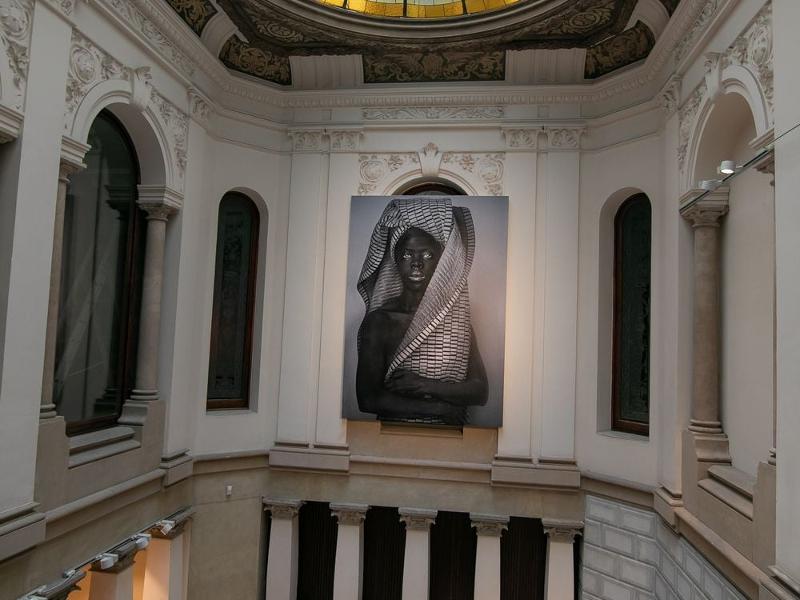Step into the world of censored artworks at the Museu de l’Art Prohibit in Barcelona. This groundbreaking museum, spearheaded by collector and businessman Tatxo Benet, showcases artworks that have been censored, prohibited, or denounced for political, social, or religious reasons. In this inaugural exhibition, explore 42 captivating pieces that push boundaries and challenge societal norms. Join us on a journey of artistic freedom and the triumph of expression.
Exploring the Museum's Vision
Discover the inspiration behind the Museu de l’Art Prohibit and its mission to showcase censored artworks.
Step into the Museu de l’Art Prohibit and immerse yourself in a world where art and censorship collide. This visionary museum, founded by collector Tatxo Benet, aims to shed light on artworks that have faced political, social, or religious opposition. By providing a platform for these censored pieces, the museum challenges societal norms and celebrates the power of artistic expression.
Through its inaugural exhibition, the Museu de l’Art Prohibit invites visitors to explore 42 thought-provoking artworks that have been silenced or denounced. From controversial religious imagery to politically charged pieces, each artwork tells a story of resistance and defiance. Join us as we embark on a journey of artistic freedom and the triumph of expression.
Unveiling Censored Masterpieces
Delve into the captivating artworks featured in the Museu de l’Art Prohibit's inaugural exhibition.
The Museu de l’Art Prohibit's inaugural exhibition showcases a diverse range of censored masterpieces that have sparked controversy and challenged societal norms. From the pixelated portraits of politicians and activists in Spanish artist Santiago Sierra's Political Prisoners in Contemporary Spain to the provocative religious imagery in Argentine artist León Ferrari's Western-Christian Civilization, each artwork pushes boundaries and invites viewers to question the status quo.
One of the highlights of the exhibition is Finnish artist Jani Leinonen's McJesus, which depicts Ronald McDonald on a cross. This satirical piece, originally removed from view at the Haifa Museum of Art, sparks conversations about consumerism, religion, and cultural icons. These censored masterpieces serve as a powerful reminder of the importance of freedom of expression in the art world.
Giving Voice to Marginalized Communities
Explore the artworks that shed light on the struggles faced by marginalized communities.
The Museu de l’Art Prohibit goes beyond political and religious censorship to address the struggles faced by marginalized communities. South African photographer Zanele Muholi's Lena, London captures the resilience and beauty of the LGBTQ population in South Africa, who often face discrimination and violence. Muholi's powerful photographs give voice to those who have been silenced and marginalized.
Another artwork that shines a light on marginalized communities is Spanish artist Charo Corrales' Con Flores a María. This controversial piece portrays the Virgin Mary with her hand between her legs, challenging traditional religious iconography. By confronting taboos and addressing social issues, these artworks create a space for dialogue and understanding.
The Impact of Censorship
Reflect on the consequences of censorship and the importance of artistic freedom.
Censorship not only restricts an artist's freedom but also limits society's ability to engage with thought-provoking artworks. Tatxo Benet, the founder of the Museu de l’Art Prohibit, believes that censorship is a failure, as it stifles creativity and hinders the free exchange of ideas. By showcasing censored artworks, the museum aims to spark conversations, challenge preconceptions, and promote tolerance.
Art has the power to transcend boundaries and provoke change. Through the Museu de l’Art Prohibit, visitors can witness the resilience of artists in the face of censorship and explore the transformative potential of artistic expression. Join us in celebrating the triumph of freedom of expression and the enduring power of art.
Conclusion
The Museu de l’Art Prohibit in Barcelona is a testament to the power of artistic freedom and the resilience of artists in the face of censorship. Through its inaugural exhibition, the museum showcases censored artworks that challenge societal norms and spark conversations. By providing a platform for these silenced masterpieces, the museum invites visitors to question, reflect, and celebrate the triumph of expression.
FQA
Why is the Museu de l’Art Prohibit important?
The Museu de l’Art Prohibit is important because it sheds light on artworks that have been censored, prohibited, or denounced for political, social, or religious reasons. It challenges the notion of censorship and promotes artistic freedom and expression.
What can visitors expect from the inaugural exhibition?
Visitors can expect to explore 42 thought-provoking artworks that push boundaries and challenge societal norms. From controversial religious imagery to politically charged pieces, the exhibition offers a diverse range of censored masterpieces.
How does the Museu de l’Art Prohibit give voice to marginalized communities?
The museum features artworks that shed light on the struggles faced by marginalized communities. Artists like Zanele Muholi use their work to give visibility and voice to LGBTQ populations who often face discrimination and violence.
What is the impact of censorship on art?
Censorship restricts an artist's freedom and limits society's ability to engage with thought-provoking artworks. The Museu de l’Art Prohibit aims to challenge preconceptions, spark conversations, and promote tolerance by showcasing censored artworks.

